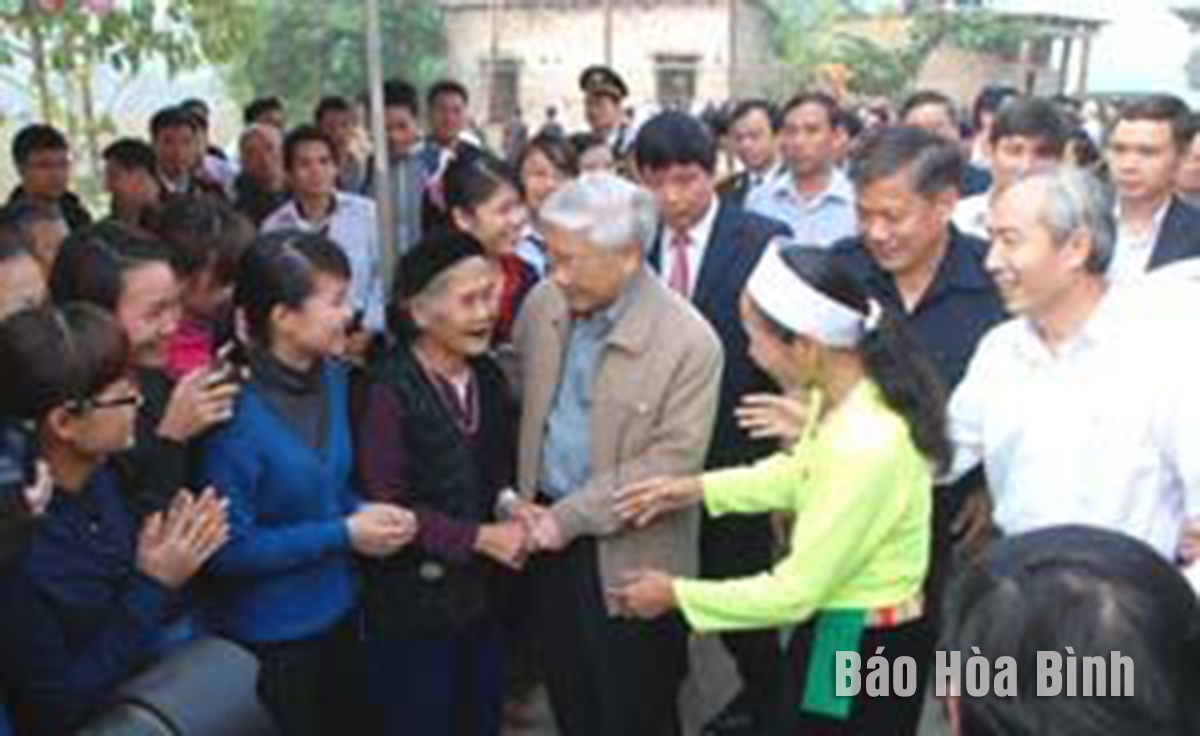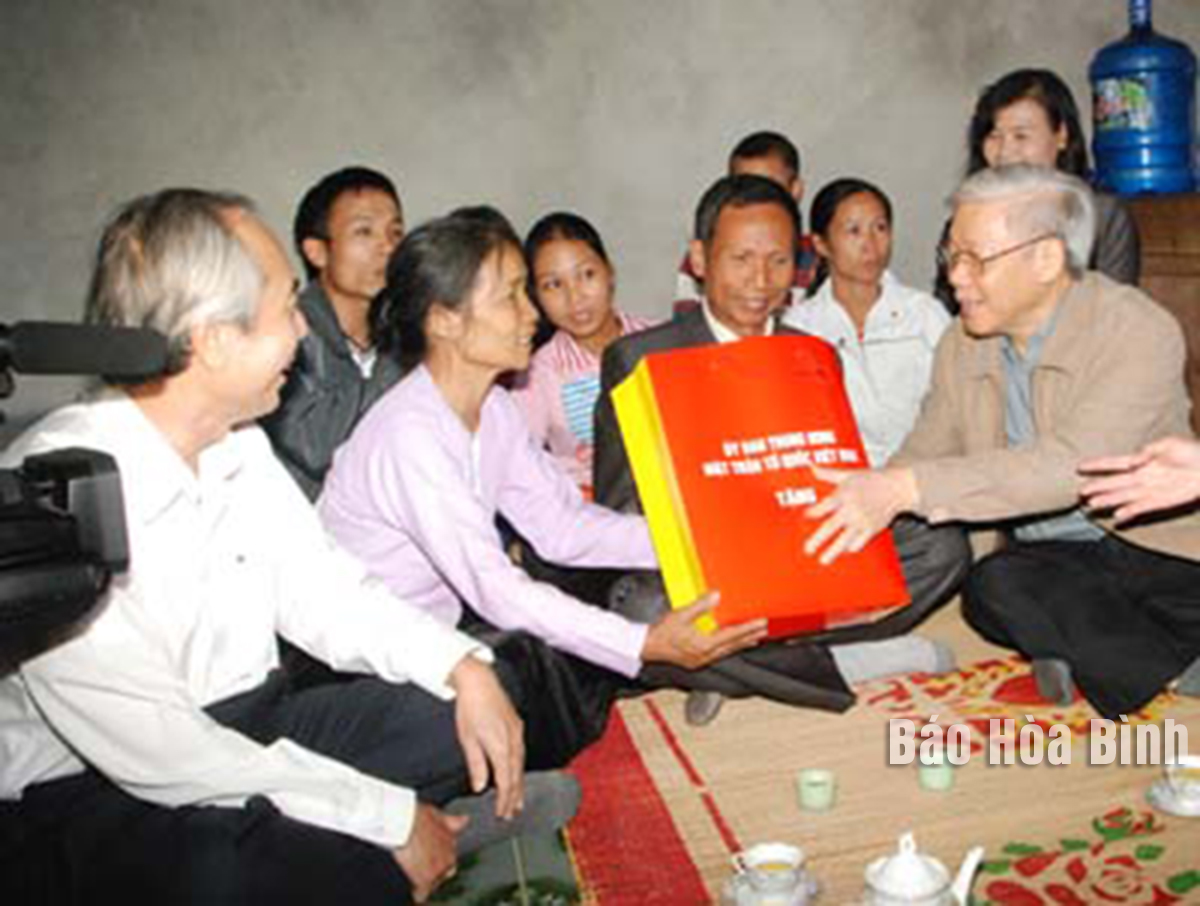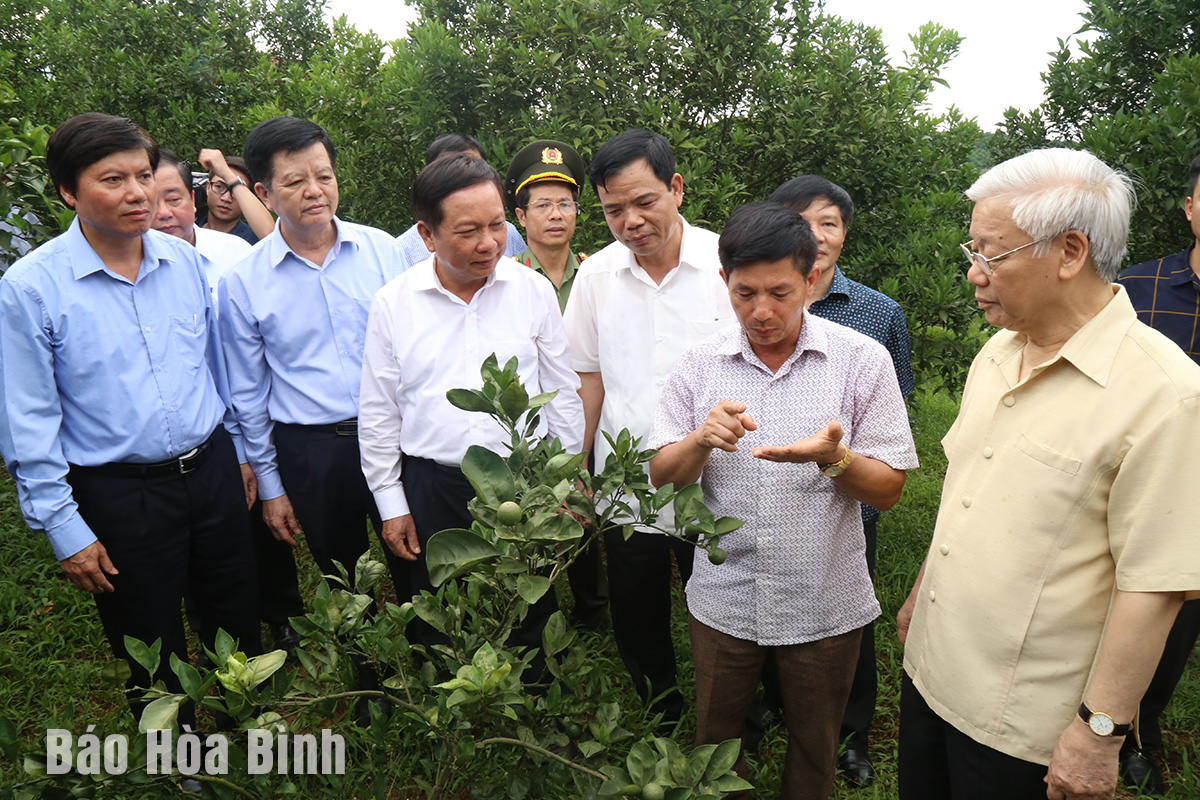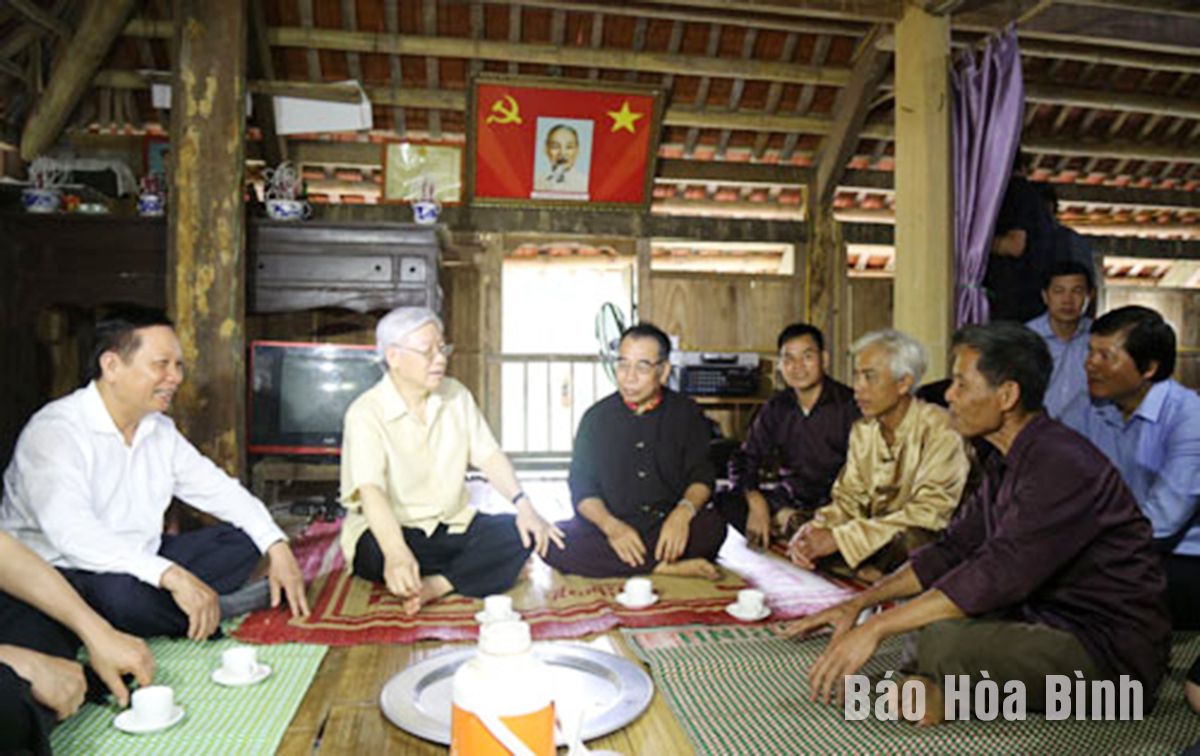.jpg)
In his 14 years as the leader of the Communist Party of Vietnam, General Secretary Nguyen Phu Trong visited Hoa Binh province three times. Each locality, unit, and enterprise visited by the General Secretary, and every household and wounded soldier kindly encouraged and given gifts by the late leader always remember and deeply keep in their mind the feelings of their beloved leader.

1. General Secretary Nguyen Phu Trong first pays a working
visit to Hoa Binh in his position as the Party chief on November 13, 2011. He
attended the great national solidarity festival in Cau village, Bac Son
commune, Kim Boi district, where he asked the Party Committee, authorities, and
people of all ethnic groups in the village in particular and Hoa Binh province
in general to continue promoting the traditions and achievements, harmoniously
combining the process of industrialisation and modernisation with urbanisation,
and building an ever more prosperous, beautiful, and civilised home province.

2. General Secretary Nguyen Phu Trong visits, gives gifts to
the family of Bui Duc Gian, a war invalid in Cau village, Bac Son commune.

![]() 3. General Secretary Nguyen Phu Trong visits the province
for the second time on May 14 - 15, 2017. He visited and learned about an
orange growing model of Nguyen Duc Thuy's household in Cao Phong town (Cao
Phong district).
3. General Secretary Nguyen Phu Trong visits the province
for the second time on May 14 - 15, 2017. He visited and learned about an
orange growing model of Nguyen Duc Thuy's household in Cao Phong town (Cao
Phong district).

4. General Secretary Nguyen Phu Trong visits and learns
about the community-based tourism model of Dinh Van Lon's family in Ai village,
Phong Phu commune (Tan Lac), and meets residents in the commune.
.jpg)
5. Working with leaders and people of Tan Lac district and
Phong Phu commune, General Secretary Nguyen Phu Trong hails the results and
achievements gained by the locality over recent years. He requested the
district Party Committee, authorities, and people to continue promoting the
tradition of solidarity, building a clean and strong Party organisation and a
strong political system.
Nestled halfway up the mountains in Cao Son commune, Da Bac district, Sung village appears like a picture preserved intact through generations. With a history of over 300 years, the village is home to nearly 100 households of Dao Tien ethnic group – the people who still maintain their distinctive characteristics in housing architecture, clothing, customs and traditional crafts. The village is drawing increasing interest and exploration from both domestic and international tourists, as every visit becomes a cultural journey to experience the authenticity, friendliness, and hospitality of this highland region.
This Spring, more than 1,000 phoenix trees in Thang Hamlet, Thach Yen Commune (Cao Phong) have bloomed brilliantly, quickly spreading on social media. The picturesque beauty of the flower garden has attracted the participation of many people to admire and take photos.
This belief is both a guiding principle and a lifelong ambition for Sa Van Cam, a member of the Tay ethnic group in Da Bac district and a passionate advocate for the Tay culture. The native has devoted years to the revival, preservation, and teaching of the ancient Tay script.
Located just 25 km from Hoa Binh city and approximately 100km from Hanoi, with a journey of around 1 hour 45 minutes, Ngoi Hoa ecotourism site (PriorBay Resort) in Suoi Hoa commune, Tan Lac district, is a stunning peninsula retreat, and a standout destination within the Hoa Binh Reservoir tourism area. Officially opening in February this year, the resort captivates visitors with its distinctive vacation products and a range of exciting adventure experiences.
Over 1,500 women paraded in traditional ao dai (long dress) at Hoa Binh Square on March 5 to mark Ao Dai Week 2025 launched by the Vietnam Women's Union. Organised by the provincial Women’s Union in collaboration with the city’s chapter, the annual event features lively folk dance performances and a colorful parade that celebrated the beauty of Vietnam’s traditional dress and its rich cultural heritage.
With skillful and meticulous craftsmanship, H’Mong women in Pa Co Commune, Mai Chau district carefully carry out dozens of manual steps to weave skirts, bags, scarves… with vibrant colors. They continue to preserve the traditional brocade weaving, transforming these products into tourism goods while also promoting the H’Mong people's unique cultural beauty.


.jpg)



3. General Secretary Nguyen Phu Trong visits the province
for the second time on May 14 - 15, 2017. He visited and learned about an
orange growing model of Nguyen Duc Thuy's household in Cao Phong town (Cao
Phong district).

.jpg)